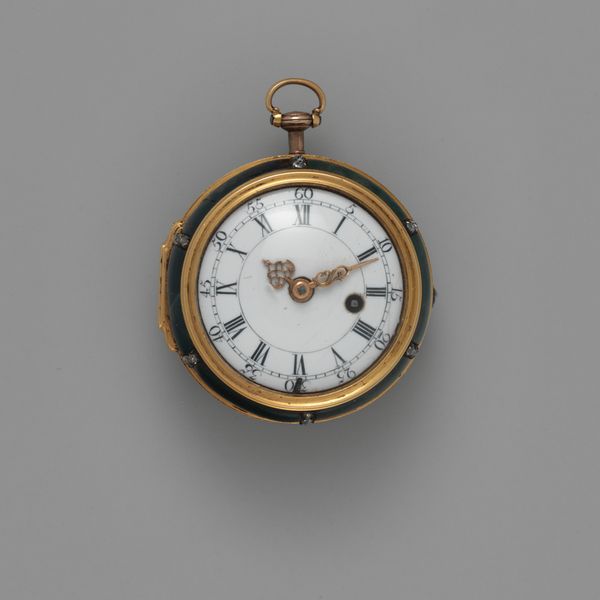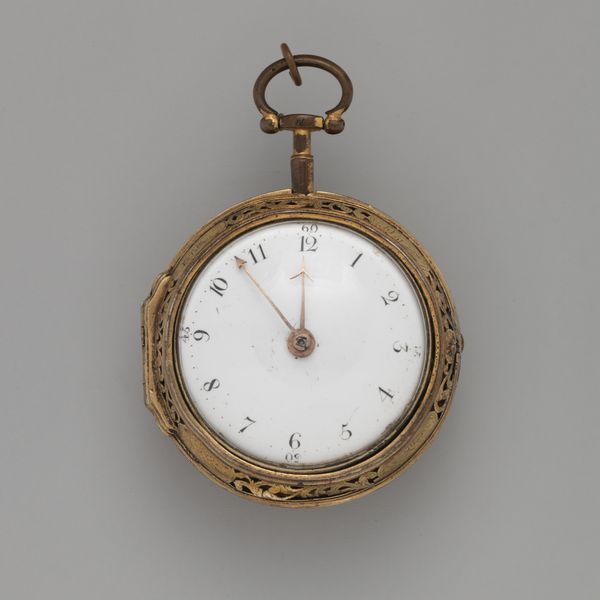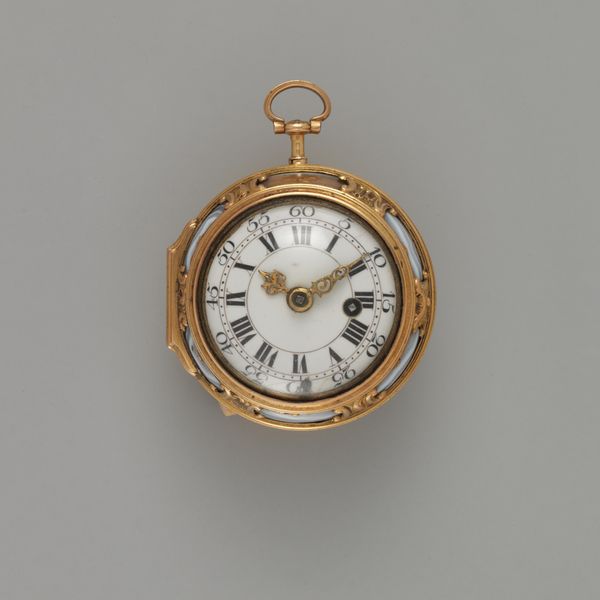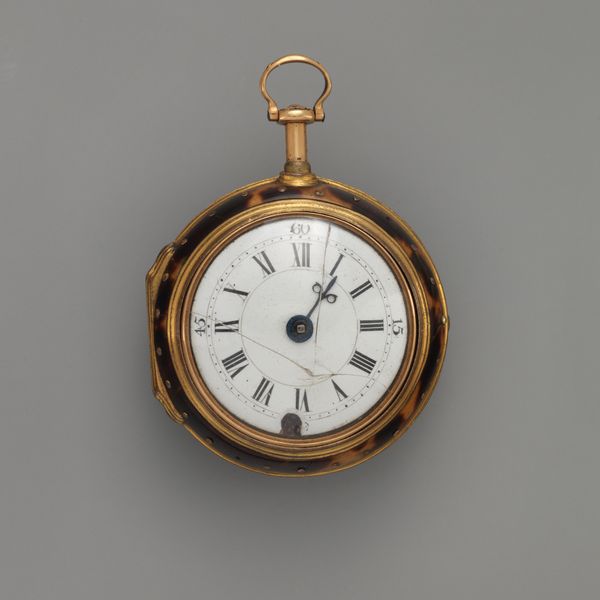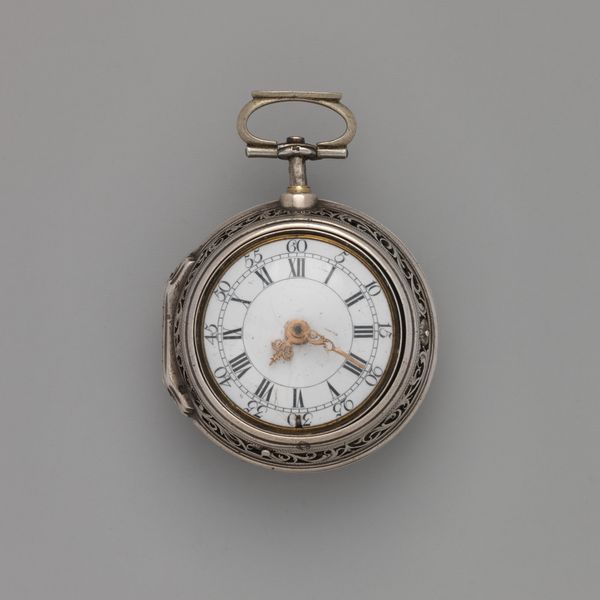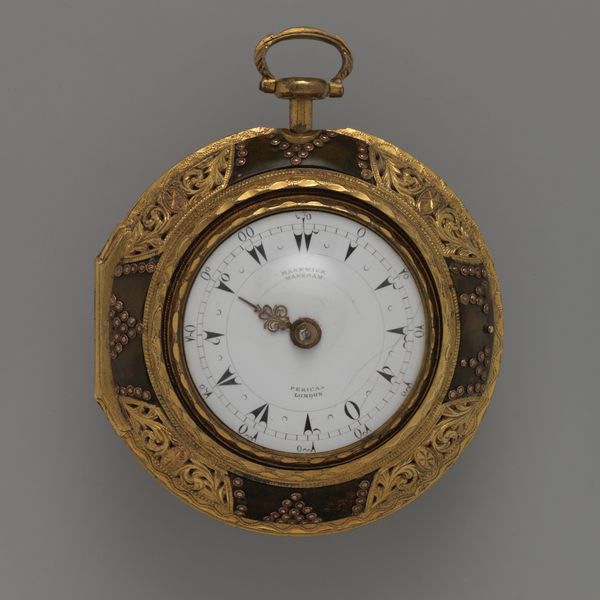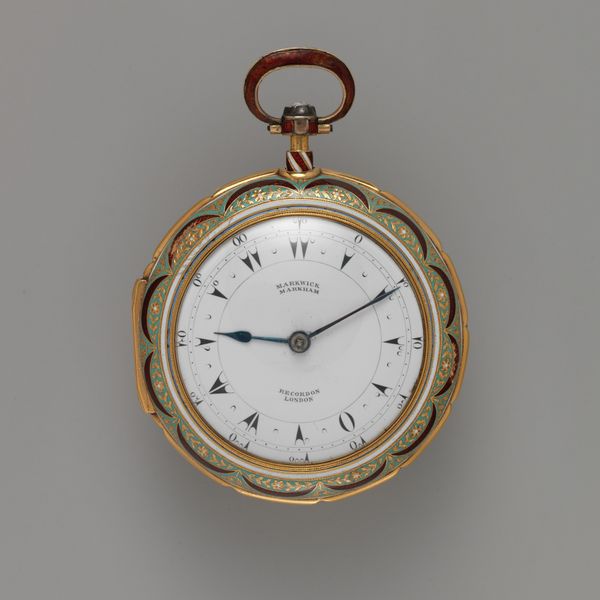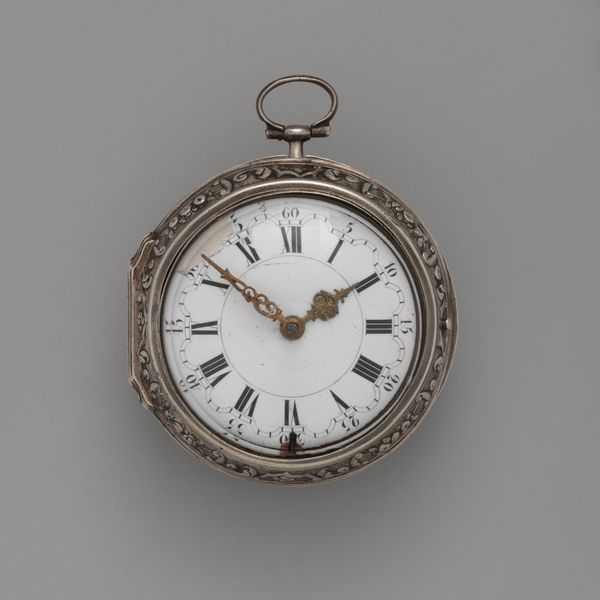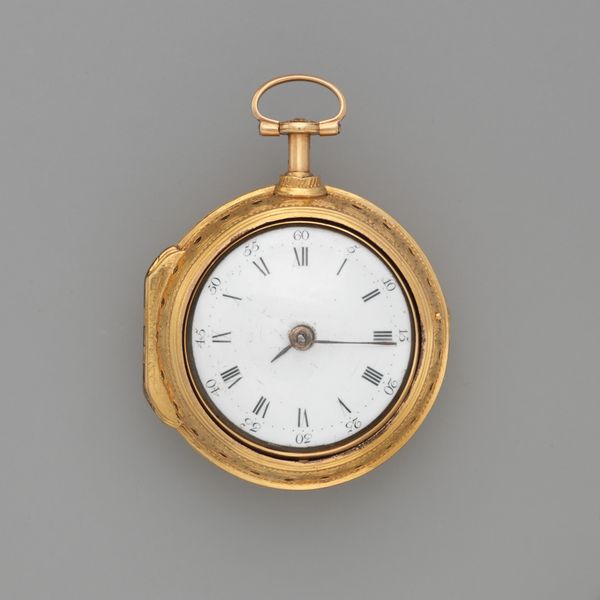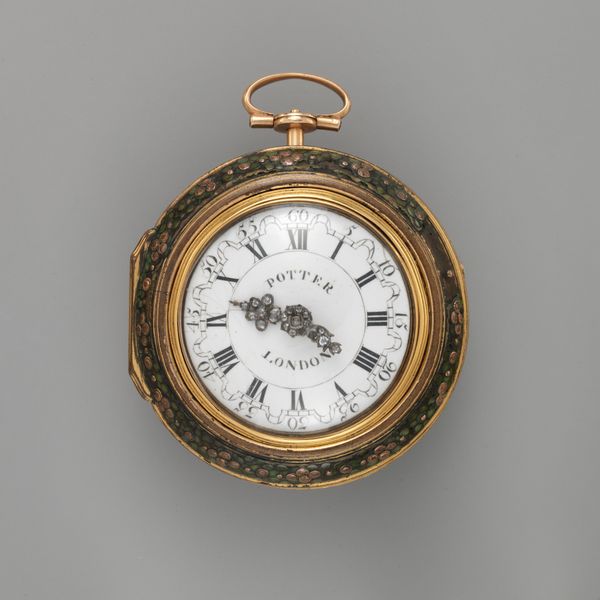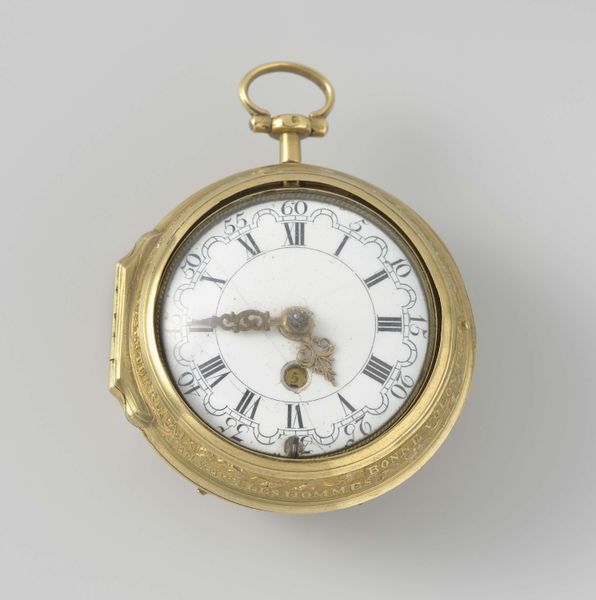
metal, sculpture, enamel
#
portrait
#
16_19th-century
#
metal
#
sculpture
#
romanticism
#
enamel
#
decorative-art
Dimensions: Diameter: 1 7/8 in. (4.8 cm)
Copyright: Public Domain
Curator: Here we have a Repeating Watch, crafted sometime between 1807 and 1818. It’s a stunning example of decorative art made with metal and enamel, signed by George Prior. Editor: Immediately, I’m struck by how ornate it is for a timepiece. It feels more like a jewel, really. Curator: Precisely! These repeating watches weren’t just functional; they were status symbols. The repeating mechanism, which chimes the hour, was incredibly complex. Think of it as the "high complication" of its day, a demonstration of wealth and taste. The face is especially intriguing with what appear to be arabic numberals, read upside down as the numbers on modern clock faces, can you talk a little bit about it. Editor: It's the perfect encapsulation of romantic era sensibilities. While it might be easy to assume a kind of objective and rational view of time from the industrial era onward, look more closely and what is really conveyed by these timepieces is its power as something to be conquered or managed at all. Curator: It’s fascinating to consider who owned this and how time would have governed their days. A life of leisure? High society events? Editor: Time itself becomes an attribute of class, a mark of prestige. You own time in the way others are owned by it. Note how carefully it has been kept in immaculate condition – time and its vessels carefully maintained. Curator: The Arabic numbers remind us that time keeping practices spread across cultural boundaries even within highly specific and exclusive objects. I love to consider how these seemingly little and "delicate" mechanisms held an age-altering capacity. What we do know, in looking at this carefully manufactured clock, is the importance it could hold within personal experience. Editor: This object is, after all, a highly decorated, crafted thing. One takes from it, I suspect, as much artistic wonder as accurate record-keeping. Looking at this, I reflect on its status today as we carefully keep hold of all the tiny movements it once represented, in what becomes the movement of time, itself.
Comments
No comments
Be the first to comment and join the conversation on the ultimate creative platform.
